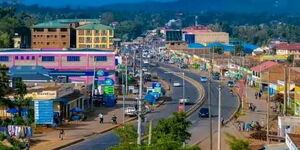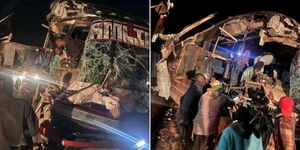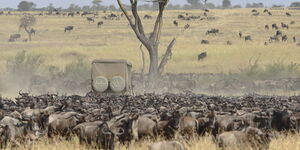The fire ravaging Isiolo's grasslands was reportedly caused by human error, the county's commissioner has revealed.
As of Wednesday, January 22, more than 300,000 acres of grazing land were affected by the bushfires with efforts to contain the blaze still ongoing.
The inferno, which has been worsened by strong winds and dry grass could have easily been avoided according to County Commissioner Geoffrey Omunde who blamed the disaster on herders and honey farmers.
"The cause of that fire, I'm told, was caused by people who were looking for honey," Omunde revealed. "Some were looking for honey while others wanted to clear tsetse flies and ticks so they were destroying that pasture to get rid of the pests."
Beekeepers typically use two methods to harvest honey and they both involve fire. The first method entails the use of smoke, which muffles the attack pheromone in bees, thus reducing the chances of harvesters getting stung.
Secondly, bee harvesters use a pile of live embers which consume the bee combs. Honey and wax end up trickling down until the entire comb is consumed by the fire.
These two methods, despite being highly effective, are extremely risky, especially in areas like Isiolo which is characterized by acres of dry grass.
The Isiolo fire started in the Malkagalla area on January 13 and has since spread to surrounding lands with the dry county's weather conditions aiding the inferno's expansion.
Fortunately, there have been no casualties among humans or livestock as a result of the wildfires, although there were initial concerns it could spread to villages and residential areas.
Iresaboru, Badana, and Sericho villages are some of the areas whose residents were in genuine danger of being affected by the wildfires. Parts of Matarba, Korbesa, and Malkagalla have also been affected.
On Monday, January 20, the government, through Interior Cabinet Secretary Kipchumba Murkomen, urged Isiolo residents to stay vigilant as efforts to fully extinguish the fire continued.
Despite no casualties being reported, the local community in the villages neighbouring the vast land affected by the fires are anticipating tough times, as they estimate the inferno-affected grazing land adequate to feed their cattle for the next two years.












